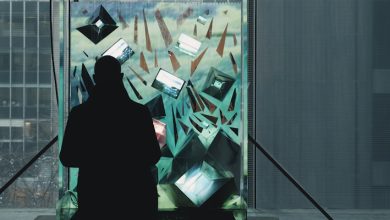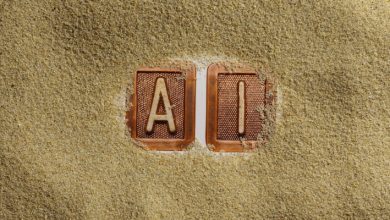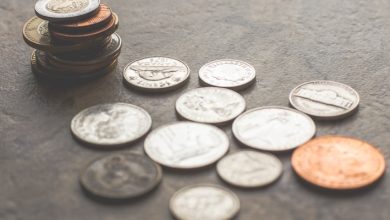How NFTs Are Transforming Digital Ownership

- Understanding NFTs and their impact on digital ownership
- Exploring the concept of non-fungible tokens and their role in the digital economy
- The rise of NFTs: A game-changer in the world of digital assets
- Unpacking the potential of NFTs for artists and creators
- NFTs: Revolutionizing the way we buy, sell, and own digital content
- Challenges and opportunities in the evolving landscape of NFTs
Understanding NFTs and their impact on digital ownership
NFTs, or non-fungible tokens, have been making waves in the world of digital ownership. These unique digital assets are built on blockchain technology, making them secure and immutable. Unlike cryptocurrencies like Bitcoin or Ethereum, NFTs represent ownership of a specific item or piece of content, whether it be digital art, music, or even virtual real estate.
One of the key aspects of NFTs is their impact on digital ownership. By tokenizing assets, creators can prove authenticity and ownership in a transparent and decentralized manner. This has revolutionized the way digital content is bought, sold, and traded, opening up new opportunities for artists, musicians, and other creators to monetize their work.
With NFTs, buyers can own a piece of digital content in a way that was not possible before. This has led to a surge in interest in the digital collectibles market, with some NFTs selling for millions of dollars. The concept of ownership in the digital realm has been redefined, giving creators and collectors new ways to interact and engage with digital content.
Exploring the concept of non-fungible tokens and their role in the digital economy
Non-fungible tokens (NFTs) have been gaining significant attention in recent years as a unique form of digital asset with the potential to transform the concept of ownership in the digital economy. Unlike cryptocurrencies such as Bitcoin or Ethereum, which are fungible and can be exchanged on a one-to-one basis, NFTs are indivisible and unique, representing ownership of a specific digital item or piece of content.
NFTs have opened up new possibilities for creators and collectors alike, allowing them to buy, sell, and trade digital assets in a secure and transparent manner. This has led to a surge in interest in digital art, collectibles, and even virtual real estate, as individuals seek to establish ownership over unique and scarce digital assets.
One of the key features of NFTs is their ability to be easily verifiable on a blockchain, providing a secure and tamper-proof record of ownership. This has made NFTs particularly appealing for artists and creators looking to monetize their work in a decentralized and transparent manner.
As the digital economy continues to evolve, NFTs are poised to play an increasingly important role in shaping the way we buy, sell, and own digital assets. Whether it’s through unique pieces of digital art, virtual real estate, or collectibles, NFTs offer a new way for individuals to establish ownership over digital assets in a way that was previously not possible.
The rise of NFTs: A game-changer in the world of digital assets
The rise of Non-Fungible Tokens (NFTs) has been nothing short of revolutionary in the realm of digital assets. These unique tokens have completely transformed the way we perceive and interact with digital ownership, creating new opportunities for creators, collectors, and investors alike.
Unlike traditional cryptocurrencies such as Bitcoin or Ethereum, NFTs represent ownership of a specific digital asset, whether it be artwork, music, videos, or even virtual real estate. This has opened up a whole new world of possibilities for artists and content creators, allowing them to monetize their work in ways that were previously impossible.
One of the key advantages of NFTs is their ability to provide proof of ownership and authenticity through blockchain technology. This means that each NFT is unique and cannot be replicated or replaced, giving both creators and buyers peace of mind knowing that their digital assets are secure.
Furthermore, the decentralized nature of NFTs means that they are not controlled by any single entity, making them resistant to censorship and manipulation. This has led to a surge in interest from both individual and institutional investors looking to diversify their portfolios with digital assets.
Unpacking the potential of NFTs for artists and creators
NFTs have opened up a world of possibilities for artists and creators looking to expand their reach and monetize their digital creations. By tokenizing their work, artists can establish ownership rights and create scarcity in the digital realm.
One of the key benefits of NFTs for artists is the ability to receive royalties every time their work is sold or transferred to a new owner. This provides a continuous revenue stream that can help support their artistic endeavors.
Furthermore, NFTs allow artists to connect directly with their audience and build a community around their work. This direct relationship can lead to increased engagement and support from fans, who are eager to collect and own unique pieces of digital art.
With NFTs, artists also have the opportunity to experiment with new forms of creativity and push the boundaries of traditional art forms. By leveraging blockchain technology, artists can explore innovative ways to showcase their work and interact with their audience.
In conclusion, NFTs have the potential to revolutionize the way artists and creators engage with their audience and monetize their digital creations. By embracing this technology, artists can unlock new opportunities for growth and establish themselves as pioneers in the digital art world.
NFTs: Revolutionizing the way we buy, sell, and own digital content
NFTs, or non-fungible tokens, have been making waves in the digital world, revolutionizing the way we buy, sell, and own digital content. These unique tokens are built on blockchain technology, making them secure and immutable. By using NFTs, creators can tokenize their digital assets, whether it’s art, music, videos, or even virtual real estate, and sell them to collectors.
Challenges and opportunities in the evolving landscape of NFTs
In the rapidly evolving landscape of NFTs, there are both challenges and opportunities that come with this digital ownership revolution. One of the main challenges is the environmental impact of NFTs, particularly in terms of energy consumption. As the popularity of NFTs grows, so does the concern over the carbon footprint associated with minting and trading these digital assets. However, there are opportunities to address these challenges through the development of more sustainable practices and technologies.
Another challenge in the NFT space is the issue of copyright infringement and intellectual property rights. With the ease of creating and selling NFTs, there is a risk of unauthorized use of copyrighted material, leading to legal disputes and ethical dilemmas. To mitigate this challenge, there is an opportunity to establish clearer guidelines and regulations around the creation and ownership of NFTs to protect the rights of creators and original content owners.
On the flip side, one of the key opportunities in the evolving landscape of NFTs is the democratization of art and creativity. NFTs have opened up new avenues for artists to showcase and monetize their work directly to a global audience, without the need for traditional intermediaries. This decentralized approach to digital ownership empowers creators to retain more control over their art and receive fair compensation for their talent and efforts.
Moreover, NFTs present exciting opportunities for industries beyond art, such as gaming, real estate, and collectibles. By tokenizing unique assets and experiences, NFTs are transforming the way we perceive ownership and value in the digital realm. As more industries explore the potential of NFTs, there is a growing opportunity for innovation and collaboration to drive the mainstream adoption of this revolutionary technology.
In conclusion, while there are challenges to navigate in the evolving landscape of NFTs, there are also ample opportunities to shape a more sustainable, inclusive, and innovative digital future. By addressing concerns around energy consumption, copyright infringement, and regulatory frameworks, we can unlock the full potential of NFTs to revolutionize digital ownership across diverse industries and communities.




